Book NOW for $1 £1 €1 • Flexible Payments • No Change Fees • Private Departures Available
- Home >>
- Japan Travel Advice
Getting to
Japan
Situated in Asia’s Far East, Japan is an island nation, located within the Pacific Ocean. The northernmost part of Japan is surrounded by the Sea of Okhotsk which also borders Russia, whilst the south is bordered by the Phillippine Sea.
Average flight times:
- London to Tokyo takes around 11.5 hours
- Los Angeles to Tokyo takes around takes around 11.5 hours
- Cape Town to Tokyo takes around 21 hours
- Sydney to Tokyo takes around 9.5 hours
- New York to Tokyo takes around 14 hours
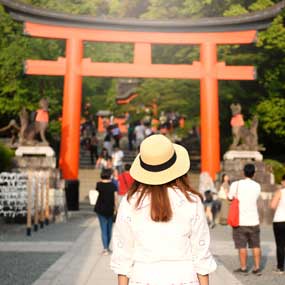
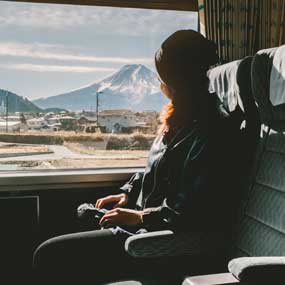
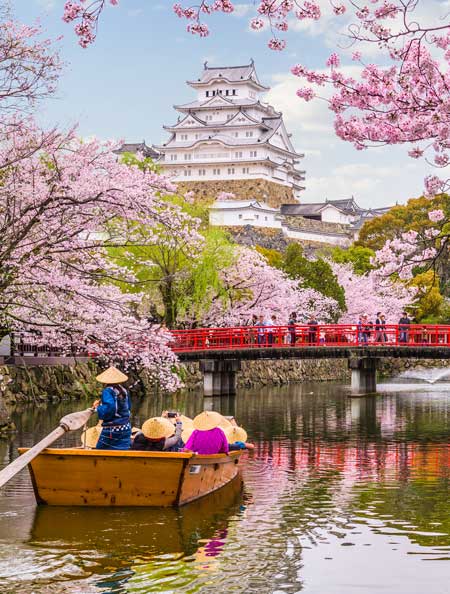
Main airport for
Japan
Japan has a number of main international airports and Tokyo alone has two. Although many travellers to Japan will fly into the capital, many will also go to Osaka. Osaka is the main airport for travellers wanting to visit Kyoto. The main airports in Japan are as followed
Haneda Airport (HND) - Tokyo
This is the busiest airport in Japan and closer to the centre of Tokyo than Narita. You can easily get the monorail into Tokyo from Haneda airport.
Narita Airport (NRT)- Tokyo
Narita is located further out of Tokyo but is still accessible via the centre of Tokyo by various trains. The JR Narita Express is by far the most commonly used, with a 1 way journey taking approximately an hour.
Osaka Kansai Airport (KIX) - Osaka
This is Osaka’s international airport and is used for people visiting Osaka, Kyoto and Kobe. There are trains and bus lines to connect you to the cities.
Fukuoka Airport (FUK) - Fukuoka
For anyone who hates the idea of extra travelling after a long flight, Fukuoka Airport is a five minute subway journey from Hakata. It has both an international and a domestic terminal and is popular with people flying from our countries within Asia.
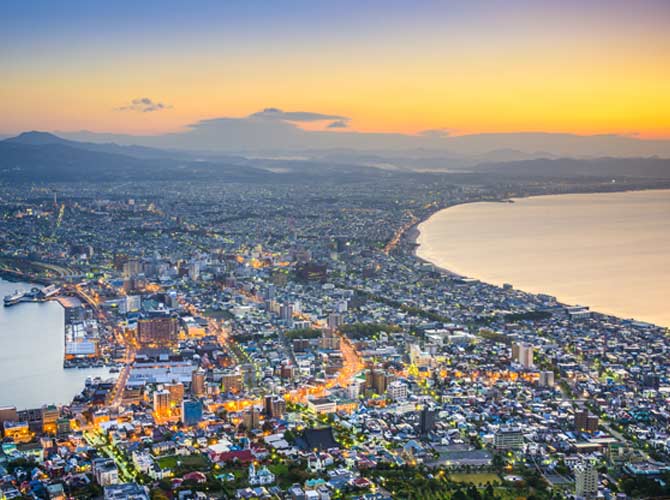
Geography and landscape
of Japan
Known as the ‘Land of the Rising Sun’ Japan is an island country with over 6,800 islands making it the largest island nation in East Asia. The main islands are Honshu, Hokkaido, Shikoku and Kyushu, which is where the majority of people live. In terms of environment, a staggering 73% of Japan is uninhabitable with large forest and mountainous areas. Because of this there are very densely populated areas, predominantly near the coasts of Japan. Japan is one of the most populated countries in the world and Tokyo is the most populated city in the world.
Japan is also located directly where several tectonic plates meet and is the reason why there are many volcanoes found in the country. Earthquakes are also common, however some of these can be very mild and not felt at all! Japan has had several devastating earthquakes and each neighbourhood is prepped with evacuation areas.
Culture, Religion
and Etiquette
Japan has one of the most fascinating cultures in the world and balances ancient traditions mixed with the rapidly-changing modern world. During the Edo Period between 1603 and 1868, Japan was completely isolated from the rest of the world. In this time deep-standing traditions were practised, many similar to the ancient Chinese culture.
These cultural behaviours can still be seen today - with certain customs and traditions deep-rooted in Japanese society.
Japanese Geishas and Kimonos
Geishas have been established as part of Japan’s culture since the Edo Period and you can still find them today especially in Gion, Kyoto. Geishas and the younger trainees known as meikos wear traditional kimonos, the meikos wearing bright and vibrant colours.
Kimonos are also worn by many of the Japanese women, generally at festivals or celebrations such as weddings. Men will sometimes wear them at formal ceremonies but this is not as common.
Japanese Etiquette
The Japanese are extremely polite and rule abiding culture and it is not surprising they are one of the countries with the lowest crime rate in the world. Manners are taken seriously and it is important when travelling to Japan to take this into account.
Shoes must be removed when entering someone’s home and even in many restaurants, temples and historic sights. Bowing is commonplace as a form of greeting and it is custom even as a traveller to give a nod when interacting with a local.
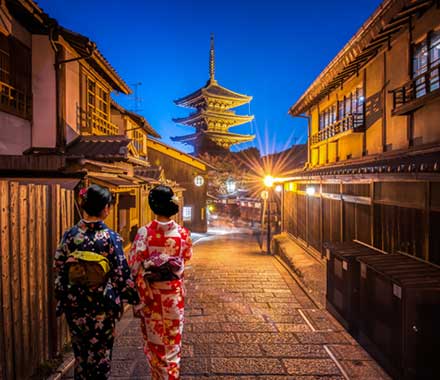
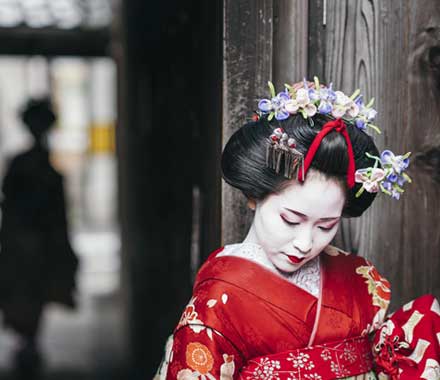
Photography
From neon-lit cities to busy markets, there will be many things you will want to take photos of when travelling in Japan. Generally it is commonplace for photos to be taken however make sure you ensure to look out for signs, especially at main sights and temples. Some strictly prohibit cameras and some allow it. Photography is also prohibited in airports and military installations.
You should also be aware of people’s privacy, including the Geishas you may see. They are extremely private and do not like their photo being taken especially without request. Please ask before taking photos of any people when visiting Japan.
Languages Spoken
Japanese is the main language spoken in Japan with different dialects across the country. English is also the next main language however you will find that many Japanese people do not understand it. Most signs will be in English as well as kanji - the characters used for written Japanese.
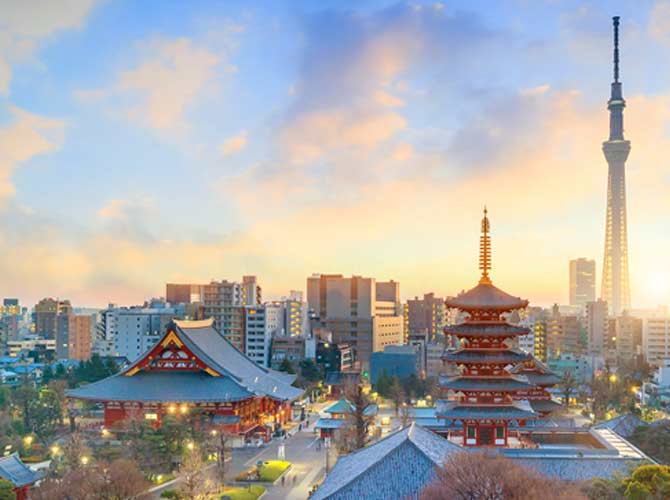
Capital City
The world’s most densely populated city, Tokyo is Japan’s sprawling capital. It consists of 23 city wards, towns and villages as well as the Ogasawara and Izu Islands. Tokyo offers something for everyone. Historic temples rest side by side to streets dedicated to pop culture and Instagrammable food. As the night goes down the city comes alive with karaoke bars, busy restaurants and amazing street food spots.
The best way to explore Tokyo is via the extensive subway and metro system. For more information about travelling within Tokyo click here.
For a full Tokyo Travel Guide click here.
Did you Know!
Tokyo was not always the capital of Japan. In 1868 the emperor Meiji left Kyoto which was the historic capital to Tokyo which at the time was known as Edo. Tokyo translates to Eastern Capital.
Visas
Anyone travelling to Japan must have a tourist visa however there are several nationalities which are exempt for this for stays up to 90 days. This includes most European countries including the UK, as well as the USA and Argentina.
Tucan Travel do not issue visas. For up to date about visiting Japan please check with your local embassy.
Vaccinations and travel health
The CDC and the WHO advise for the following routine vaccines to be up to date when visiting Japan: Measles, Mumps & Rubella (MMR), Tetanus, Diphtheria & Pertussis (TDAP), Chickenpox, Shingles, Pneumonia, Influenza, Meningitis.
They also recommend getting vaccinated against Hepatitis A and Hepatitis B. Japanese Encephalitis is recommended if you are travelling for a long period of time and will be staying in very rural areas. Rabies is recommended for those who may come into contact with animals.
Please check with your doctor about the necessary vaccinations needed for Japan in advance.
Medicines in Japan
Japan has strict laws in regards to drugs and some prescription and over-the-counter-medicines are banned. This includes painkillers including codeine as well as Vicks Inhalers, medicines for allergies and sinus problems and cold and flu medication containing Pseudoephedrine. Please check the status of the medicine you need to bring, with your Japanese embassy, otherwise you may be detained or even deported.
Is it safe to drink the tap water in Japan?
Yes, in Japan it is safe to drink tap water. Although bottled water is also cheap and found in one of the many vending machines that are dotted around most cities, we encourage passengers to bring their own refillable water bottle as plastic use is a problem in Japan.
Electricity & plugs in Japan
The plugs in Japan resemble the ones used in the USA with two pins. The voltage however is different, at 100 Volts. It is also worth packing a USB charger as some hotels in Japan are equipped with USB sockets which can be used for your phone.
Emergency calls
It is always a good idea to have a few important numbers saved on your phone in case of emergencies. The most important ones in Japan are:
- 110 is the number for the police service
- 119 is the number for the fire service and ambulance
- 118 is the number for the coastguard
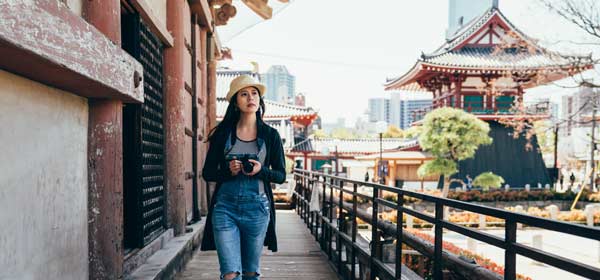
Travelling as a single woman in Japan
Japan is noted as one of the safest countries in the world with strict values of goodwill and people conforming to the status quo. The crime rate is low and you will also find that people will rush to help you if you are in need. Nevertheless nowhere is perfect so it is important to exercise the same caution you would in your own country, especially when travelling as a solo female traveller. Some subway and train carriages in Japan have dedicated female-only sections too.
Japan can be quite a culture shock for some people, especially when travelling as a solo traveller. Travelling on a group tour is a great way to get a taste of Japan before exploring the country independently.
Wifi and internet access
Wifi is common in Japan, especially at most hotels and restaurants unless you are somewhere remote. You can also bring a portable wifi or buy a Japanese sim card. On some Shinkansen journeys the Wifi may be available however this is not guaranteed - ensure you pack a book for long travel journeys!
Time Zone
Tokyo, Japan
Japan (JST) is 9 hours ahead of London (GMT), 1 hour ahead of Sydney, 16 hours ahead of Los Angeles, and 9 hours and 13 hours ahead of New York. Japan runs on Japan Standard Time and does not switch to daylight saving time. Visit timeanddate.com to calculate the time difference for your location.
Getting around Japan
Japan is famous for its efficient and reliable public transport system. Strikes are unheard of and it is rare for trains to be even seconds delayed.
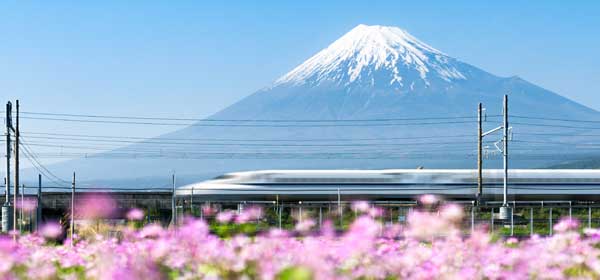
Rail
Train is by far one of the easiest ways to travel around Japan. The Shinkansen travels at speeds of up to 320 km/h (200 mph) so it is a fantastic way to see the country. The Japan Rail Pass is valid for all Shinkansen journeys. There are also a number of local trains in Japan.
Did you Know!
The Shinkansen is known for its speed and efficiency that embarking/disembarking takes around 90 seconds.
Toei Lines
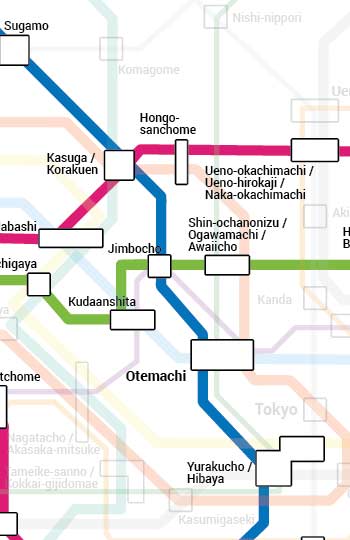
Expand for full view
Tokyo Subway Lines
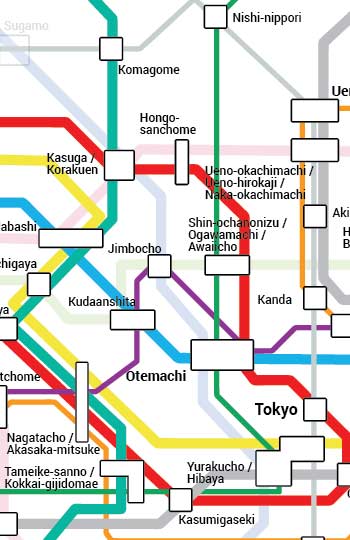
Expand for full view
Subway
Most Japanese cities like Tokyo, Kyoto and Osaka have reliable subway and metro systems which are the preferred way to get around. As Japan is heavily populated, traffic can be terrible, which is why the subway is a great choice to get from A to B quickly. Tokyo has a massive subway and metro system which can be daunting for a first time traveller in Japan, however, all the lines are colour coded and the names of the stations are also in the Roman alphabet.
Additionally to make it more confusing there is also the Yamanote Line which operates above ground, running as frequently as the subway and metro lines. This is a green line which visits many of the main tourist areas and can also be accessed with your JR Pass!
Top Tip!
Use route and timetable website hyperdia.com to help you navigate your way around Japan including Tokyo’s extensive subway and metro system.
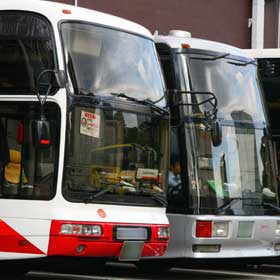
Bus
Buses are also a common mode of transport in Japan, an affordable way to see the sights of a main city. On many buses in Japan it is common to get on via the back door of the bus and pay when leaving through the front door by the driver.

Taxi
Taxis can be useful in more rural locations in Japan however in the major cities, it is often cheaper and quicker to use the local transport. It is customary for taxi drivers to open doors for their passengers and tipping is not required unlike many Western cultures.
History
Did you know that Japan is one of the oldest countries in the world? Along with Egypt, India, China and Greece, Japan has had human habitants since the prehistoric times.
The country has several defined periods which changed the ways Japan was perceived by the rest of the world. Some of the most distinctive eras are the Edo Period (1600–1868), where the Tokugawa shoguns ruled Japan from Edo, the city which is now known as Tokyo. This period was when Japan was shut off from the rest of the world and Japanese art and literacy flourished. Indeed it was when the distinctive haiku poetry was created. The Meiji government changed this and it was during the periods of 1868-1912 where the Emperor was restored to nominal power along with the aid of Meiji government officials. During this time, Western influences were introduced to Japan and trading with other countries became more prominent.
Emperor Hirohito was the longest reigning emperor in Japan’s history. During his 63 year reign from 1926-1989 there was a huge amount of turbulence including Japan’s eventual involvement in World War II. Japan had a number of hostile invasions on China which led to the USA imposing strict economic sanctions. Japan in reaction, aligned with Germany and Italy before launching a surprise attack on Pearl Harbour in 1941.
During World War II, citizens of Japan suffered greatly due to food shortages as well as increasing bombing which destroyed many major cities. On August 6th in 1945, the first nuclear attack in history occurred - where the US dropped an atomic bomb on the city of Hiroshima, killing thousands of people. Nagasaki was struck by a second bomb, three days later which led to the surrender of Japan from the war. Both cities have memorials to those who lost their lives due to these fateful days.
Japan is now considered one of the most wealthiest countries in the world with a large GDP. It is forward-thinking in terms of development and technology and offers a wealth of experiences for any style of traveller.



